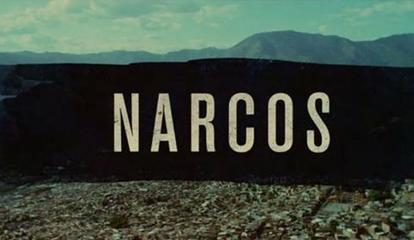Violence Film Difficulty Ranking: 3
 You may have seen the great Netflix show Narcos and believe that you know everything about violence in Colombia. However, to truly experience violence in Colombia, you should watch the aptly named Violence. The film will take you to three parts of Colombia where violence exists. It will introduce you to it’s perpetrators and victims without revealing who they are or to which armed group they belong. Ultimately everyone is part of the violence in Colombia.
You may have seen the great Netflix show Narcos and believe that you know everything about violence in Colombia. However, to truly experience violence in Colombia, you should watch the aptly named Violence. The film will take you to three parts of Colombia where violence exists. It will introduce you to it’s perpetrators and victims without revealing who they are or to which armed group they belong. Ultimately everyone is part of the violence in Colombia.
Why Watch Violence?
- Experience some of the violent conflicts carried out in Colombia.
- See the diversity of the Colombian landscape: the jungle, the city, and a small town in the country.
- Recognise that all the characters are other beings of flesh and blood – perhaps the key to stop violence.
- Learn how to make a violent movie without showing any violence!
The Breakdown
Violence starts in darkness. The only thing you can perceive is the sound of the jungle: the insects, birds, and cracking twigs. Slowly the outlines of plants and trees emerge from the darkness before the camera moves along the ground. The camera moves to the left and reveals a chain tied to a tree. The other end is tied around the neck of a man asleep on the jungle floor. He has blemishes and bug bite marks all over his body.
As daylight emerges, the camera stays in a close-up of the prisoner. All we can see is the prisoner, and some figures dressed in camo walking behind him, out of focus. The camera is restricted to where the prisoner can go, and it never ventures further than the limits of the prisoner’s chain. This shows us the lack of freedom that the prisoner has. We do not venture outside of where he is allowed to go, and everything outside that range is out-of-focus. We experience his captivity.
Whilst part one happens in the jungle, part two occurs in a Colombian city, and part three in the country. Firstly, the three locations showcase the diversity of the Colombian landscape. Secondly, the diversity of the locations show that violence is present everywhere (and not just Colombia). Even though we don’t directly see violence, we can tell it has occurred or will occur. Violence is evident in the character’s uniforms, the character’s actions, the words spoken, and the character’s faces.
Conclusion
Jorge Forero’s film shows the existence of violence of Colombia without showing the causes of it or offering a solution. Instead Ferero’s goal, as explained here (where you can also watch the film for a fee) is to make us recognise every character as human beings of flesh and blood. In doing this, we might just make it harder for another to commit violence against us.


